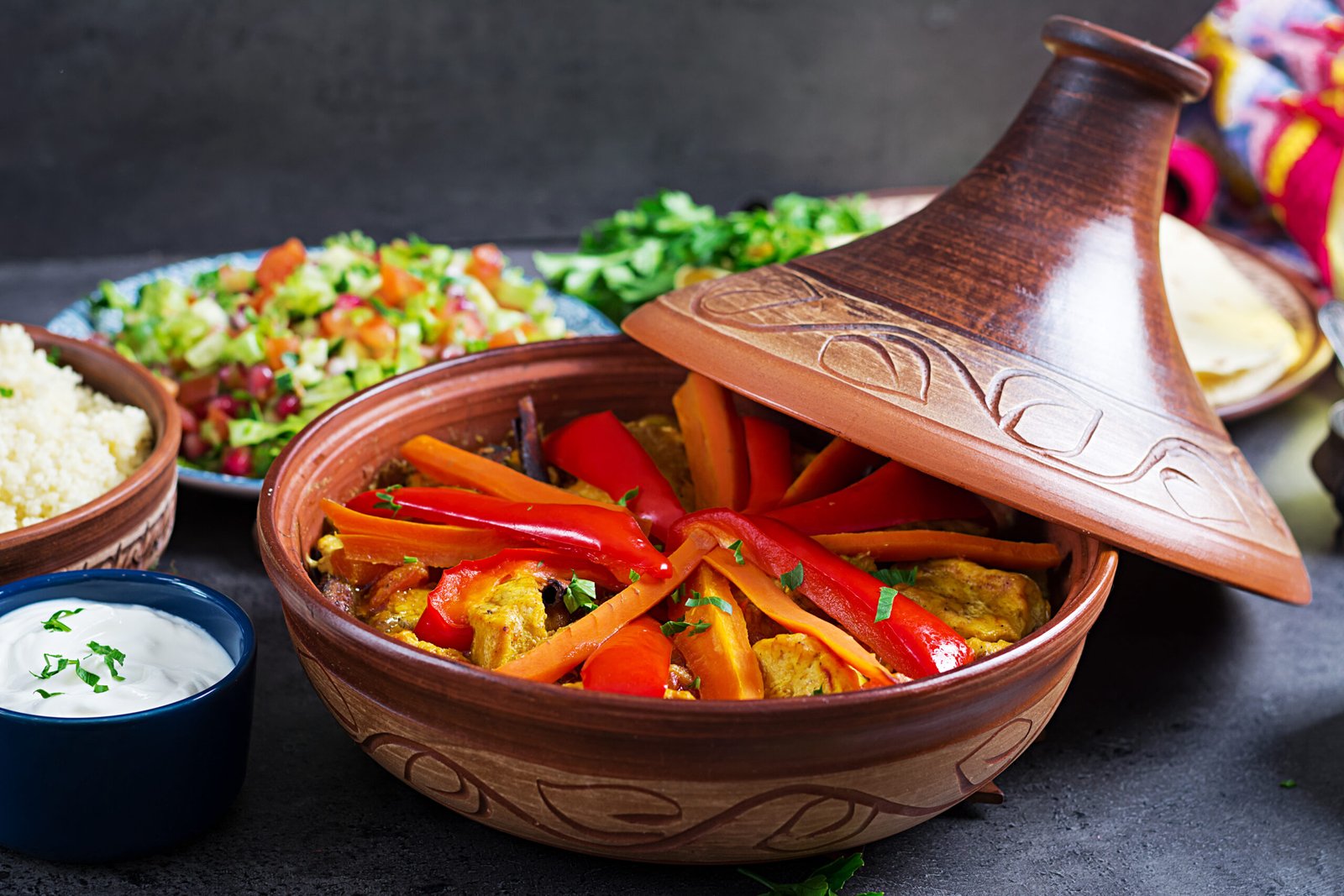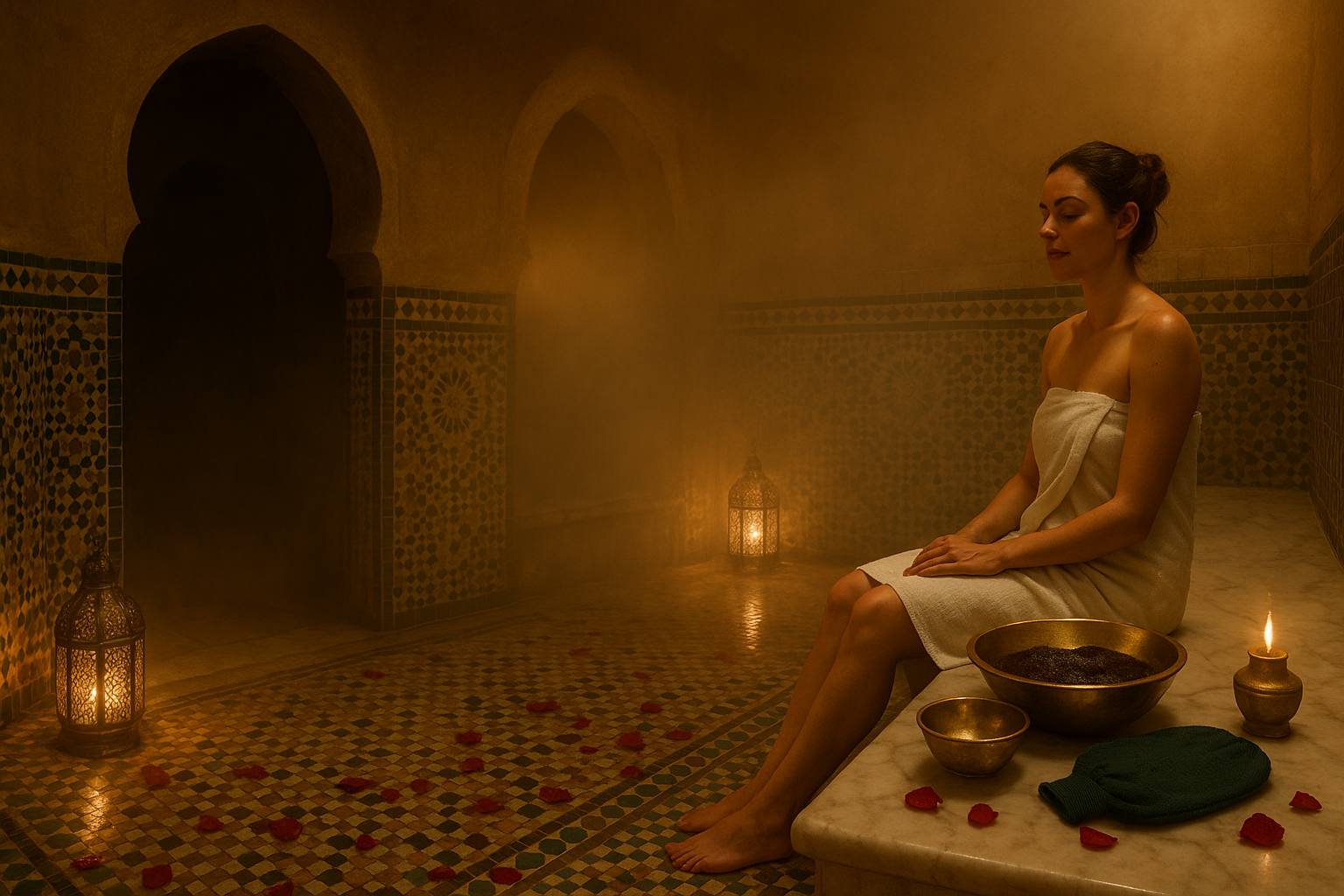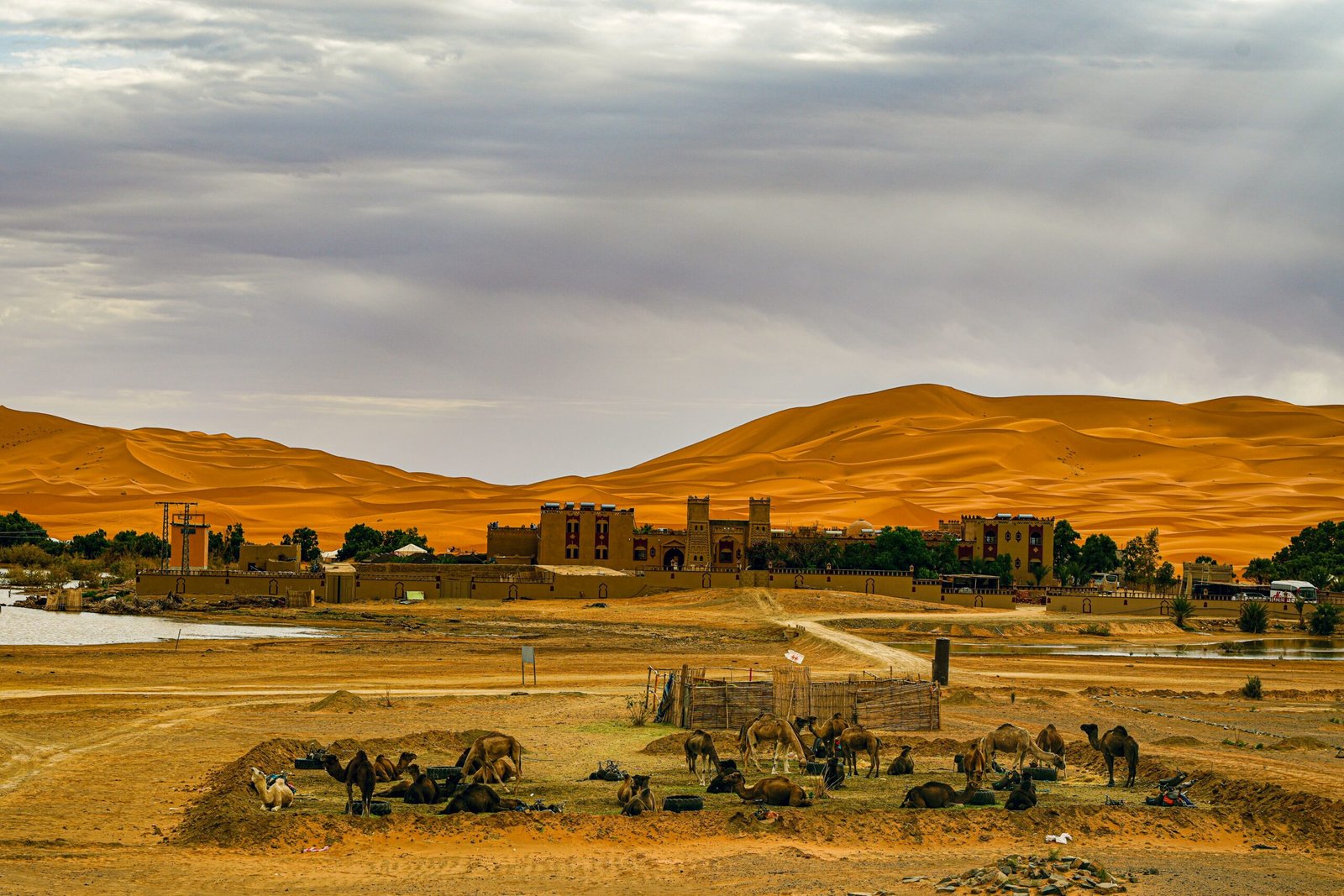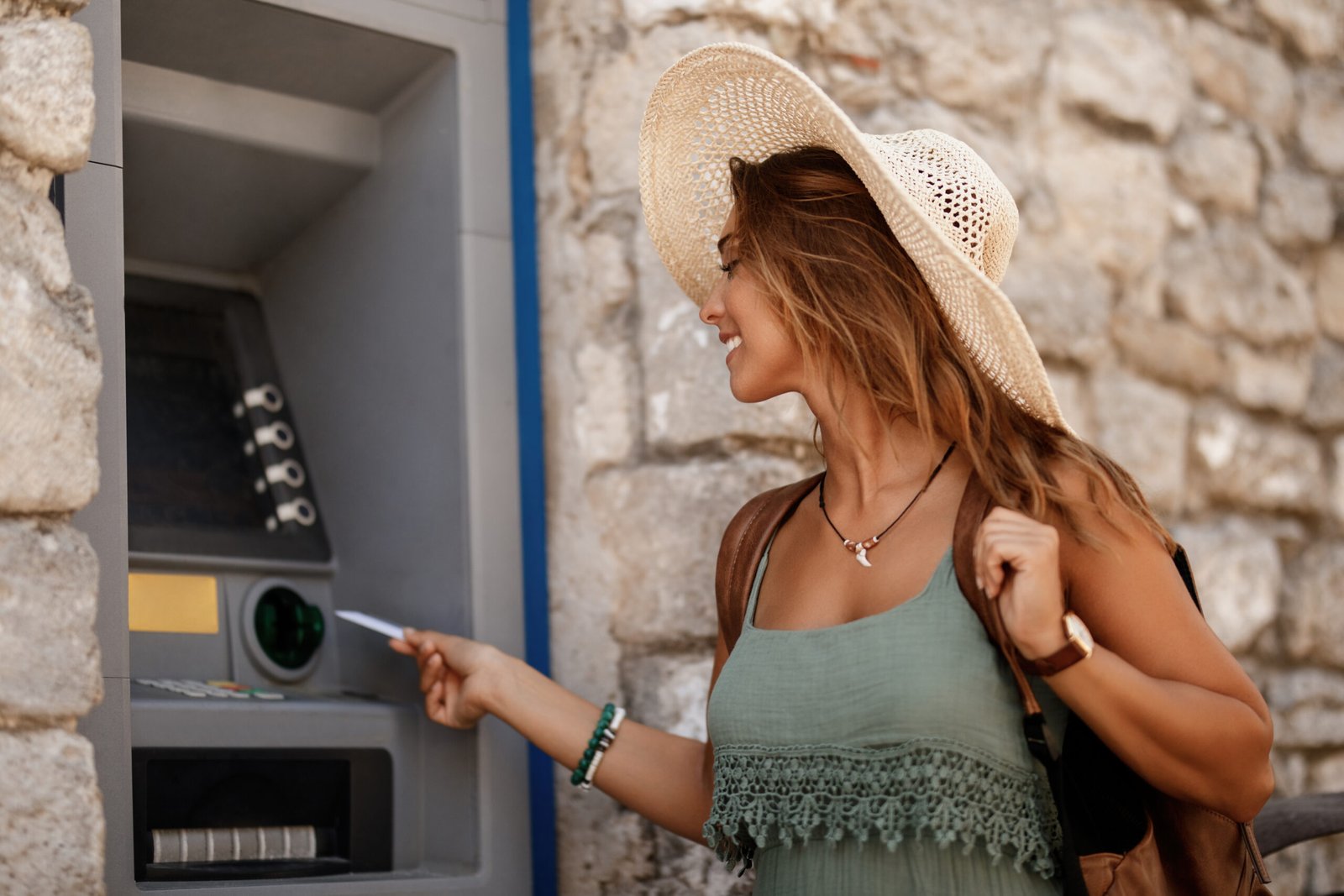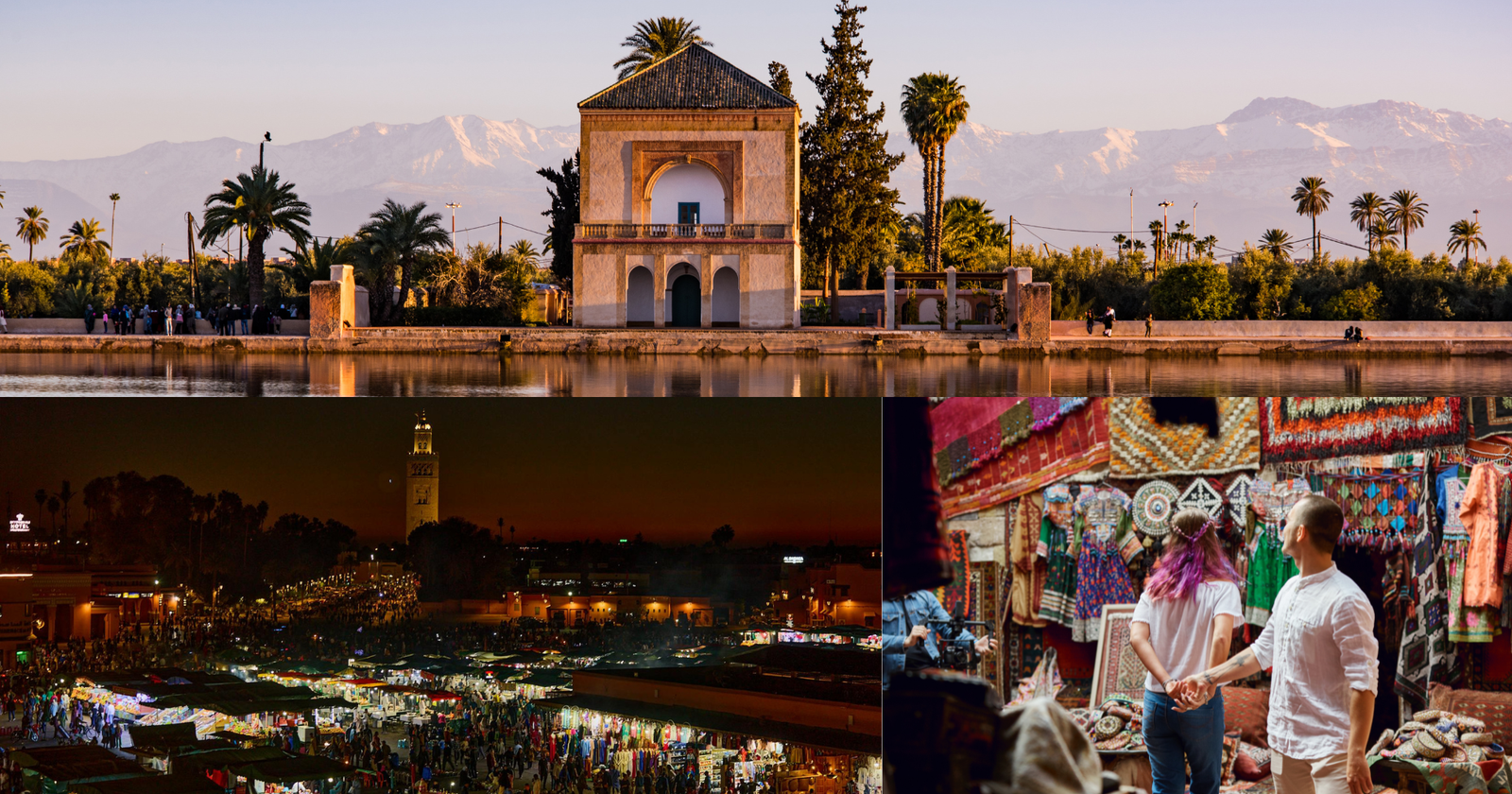Imagine a place where golden Saharan dunes cascade into turquoise Atlantic waters, where world-class wind conditions meet pristine lagoons, and where adventure seekers find their ultimate playground. Welcome to Dakhla Morocco, a coastal gem that’s rapidly emerging as one of North Africa’s most captivating destinations. Whether you’re planning Dakhla tours for kitesurfing adventures or searching for the perfect Dakhla Morocco hotels for a relaxing retreat, this comprehensive guide reveals everything you need to know about this extraordinary destination that’s being called the “Maldives of Morocco.”
Key Takeaways
Dakhla’s Identity: Often called the “Maldives of Morocco” or the “City of the Future,” this hidden paradise sits on a peninsula where the Sahara Desert dramatically meets the Atlantic Ocean.
Main Attraction: The expansive Dakhla Lagoon—a 45-kilometer flatwater paradise that’s become a world-famous hotspot for kitesurfing and windsurfing enthusiasts.
Safety: The city and popular tourist resorts maintain excellent safety standards, though travelers should avoid inland areas controlled by the Sahrawi Arab Democratic Republic.
Best Time to Visit: April through October offers the most reliable wind conditions and optimal temperatures for kitesurfing, with mild weather year-round.
Must-See Sites: The White Dune (La Dune Blanche), oyster farms producing Morocco’s finest seafood, and the uniquely shaped Dragon Island.
Understanding Dakhla: Location, History, and Unique Identity
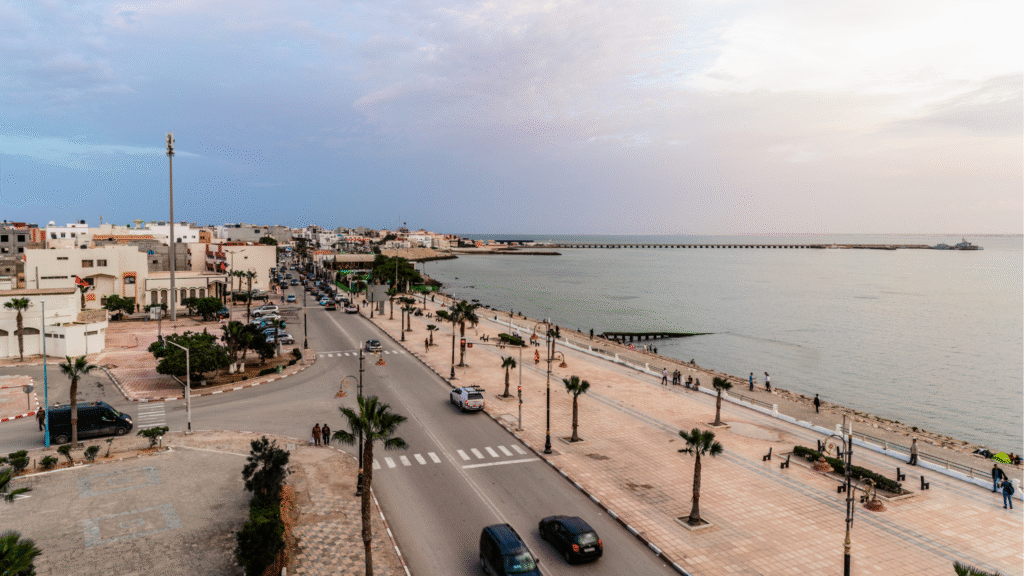
Dakhla’s Complex Geopolitical Context
Before planning your visit to Dakhla Morocco, it’s important to understand its unique position. This medium-sized city of just over 100,000 residents is located in Western Sahara, a territory with ongoing discussions about sovereignty. Historically serving as the capital of Spanish Sahara, the region maintains historical ties to the Canary Islands.
Despite these complexities, this coastal destination has become a thriving hub that welcomes travelers from around the world. Many sources emphasize supporting the local economy while acknowledging these ongoing conversations, kindly requesting visitors focus on cultural appreciation rather than political debate.
Why Dakhla is Called the “City of the Future”
The “City of the Future” nickname isn’t just marketing—it reflects rapid transformation. Morocco has invested heavily in infrastructure, including the construction of the country’s largest airport, now offering direct flights from Paris, London, and Germany. This development extends beyond tourism; the city hosts one of Africa’s largest water treatment centers, demonstrating a commitment to sustainable growth that balances economic opportunity with environmental responsibility.
Is Dakhla Safe to Visit? Essential Safety and Political Context
Personal Safety and Local Atmosphere
Safety concerns often top the list of questions for travelers considering Dakhla tours. The good news? Visitors consistently report feeling secure and welcomed throughout their stay. The local population is renowned for their warmth and hospitality, creating an atmosphere that puts travelers at ease.
For women travelers specifically, this destination offers a refreshingly respectful environment with notably low instances of street harassment compared to other Moroccan cities—a detail that many female visitors highlight in their travel reviews.
Areas to Avoid and Travel Precautions
While the city itself is safe, certain precautions are essential. Avoid visiting inland areas controlled by the SADR (Sahrawi Arab Democratic Republic), and never venture off-road without proper guidance, as some remote areas still contain mines from past conflicts. If you’re planning to travel south toward Mauritania, convoy travel is strongly advised or sometimes required for safety reasons.
Logistics: How to Get to Dakhla and Get Around
Arrival Options: Flying vs. Driving
By Plane (Recommended): Direct flights operate from Casablanca and Agadir via Royal Air Maroc, and from Marrakech via Air Arabia. International connections from Paris, France, and Germany make access easier than ever. Expect domestic roundtrip flights to average around $200—a reasonable investment considering the alternative travel times.
By Bus: The overland option requires serious commitment—24+ hours from Marrakech via carriers like Supratours or CTM. While budget-friendly, this marathon journey tests even the most patient travelers.
By Car: Road tripping transforms the journey into an adventure itself, though it requires a minimum of two days. Expect frequent police checkpoints, and avoid night driving due to poor lighting and the very real risk of camels crossing the road.
Getting Around Dakhla
Within the city, taxis are readily available—just agree on the fare before starting your ride. For exploring surrounding areas, renting a car provides flexibility, though be prepared for limited GPS coverage and unpaved roads that may require off-road driving skills.
Dakhla Adventure: The World’s Kitesurfing Mecca and Water Activities
Kitesurfing and Windsurfing
The legendary Dakhla Lagoon is the star attraction, offering 45 kilometers of butter-flat water with constant winds that create ideal conditions for both beginners and professional athletes. This natural wonder has earned the region its reputation as a kitesurfing paradise.
Pricing: Many Dakhla Morocco hotels offer kitesurfing packages that bundle accommodation, meals, and equipment, providing better value than à la carte options. Independent lessons typically cost around 80€ per hour.
Best Kitesurfing Spots:
- Speed Spot: Famous for its glass-smooth water at low tide, attracting freestylers who can execute tricks on perfectly flat conditions
- Oum Lbouer (Wave Spot): Delivers excellent waves from October through March, though winds can be slightly lighter and gustier within the bay

Thrilling Desert and Land Adventures
Beyond water sports, Dakhla tours showcase the region’s diverse landscapes:
- Quad Biking: Traverse stunning Saharan desert terrain en route to coastal lagoons
- Desert Excursions: Options range from half-day trips to multi-day treks featuring camel trekking and sandboarding
- Natural Hot Springs: Therapeutic, sulfur-rich waters offer relaxation (be prepared for the distinctive sulfur aroma)
- The Ostrich Farm: An affordable, quick stop at just 10 dirhams per person
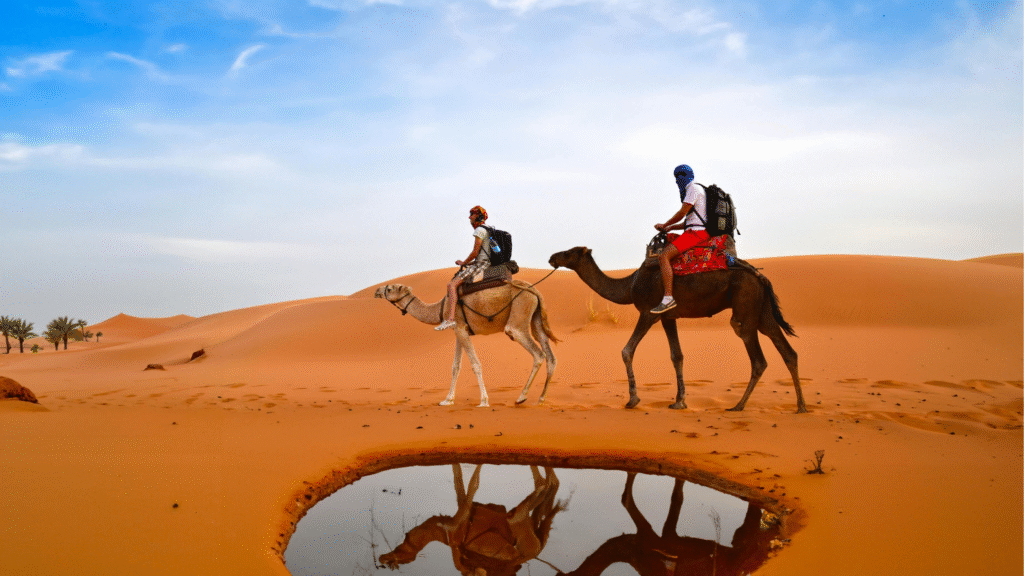
Discovering Dakhla’s Must-See Natural Attractions and Day Trips
The White Dune (La Dune Blanche)
This massive sand dune rises dramatically from the middle of the lagoon, accessible only via 4×4 excursion. Photographers flock here for spectacular shots, while birdwatchers observe migratory species, and kite surfers use it as a launching point for epic sessions.
Dragon Island and Geological Curiosities
Also known as Île Herne, this island earns its name from its dragon-like silhouette when viewed from above. Accessible by boat or sometimes on foot during extreme low tides, it offers unique exploration opportunities.
Salt Flats and Oases
The Oum Lââziz Salt Flats create vast white expanses that produce a “magical mirror effect” when wet—an Instagram-worthy phenomenon that attracts photographers from around the globe. Meanwhile, the Oasis de Foum el Bouir provides lush contrast, serving as a birdwatcher’s paradise.
Where to Eat and Immerse in Dakhla’s Culture
Seafood and Culinary Delights
The culinary scene centers on exceptional seafood, particularly oysters farmed in the pristine lagoon waters. At just 4 dirhams each, fresh raw oysters represent incredible value. Don’t miss the octopus tajine at Talhamar, the oyster farm restaurant that locals and visitors alike recommend enthusiastically.
For traditional experiences, seek out Friday couscous at local establishments like Ntifi. Camel meat occasionally appears on menus, though it’s relatively rare since camels hold more value alive than as food.
The Saharawi tea ceremony offers genuine cultural immersion—this elaborate ritual takes over an hour and involves drinking three to four glasses, each with distinct flavors reflecting different stages of the brewing process.
Cultural Immersion and Shopping
The local souk provides authentic shopping opportunities. Look for melhfa fabric (lightweight wraps worn by Saharan women), Saharawi loose tea, and el aych grain. Engaging with local fishing communities offers insights into daily life and traditions that have sustained this coastal culture for generations.
Dakhla Accommodation Guide: Resorts vs. City Stay
Kite Resort Comparison
Most specialized resorts operate on all-inclusive bases—practical given their isolated locations along the lagoon. Note that few Dakhla Morocco hotels list prices online or appear on major booking platforms; be prepared for prepayment requests via bank transfer.
Popular Resort Options:
- Dakhla Attitude: One of the largest and most established resorts, located near Speed Spot with activity-focused programming
- Dakhla Club: Newer facility frequently recommended by other resort managers for its safety-first approach
- Ocean Vagabond: Ecolodge property requiring minimum five-night stays
- PK25 & Zenith Kite and Spa: Higher-end, upscale options for luxury seekers
- Budget-Friendly: Dakhla Evasion offers competitive pricing with solid reviews, while Dakhla Spirit provides the most affordable accommodations, including tent options
Staying in Dakhla Town
For budget-conscious travelers or those seeking authentic local interaction, the town center offers affordable Airbnbs and guesthouses. This option provides greater opportunities to experience daily Moroccan life beyond the resort bubble.
Practical Travel Tips and Optimal Timing
Best Time for Kitesurfing, Waves, and Weather
Overall Ideal Visit: March through June and September through November offer the best balance of activities and comfort.
SeasonBest ActivitiesTemperature RangeWind ConditionsSpring (Mar-Jun)Kitesurfing, Desert Exploration20-30°COptimal warm windsSummer (Jul-Aug)Beach Relaxation, Sunbathing30-35°C+Heaviest but gusty winds; crowded lagoonAutumn (Sep-Nov)Hiking, Festivals, Wave Surfing20-28°CExcellent for comfortable excursionsWinter (Dec-Feb)Birdwatching, Peaceful Retreats12-20°CMilder temps, lower wind reliability

Budgeting and Costs
Plan for a daily budget of 500 to 1,000 MAD ($50-$100) per person covering meals, transport, and select activities. Local meals range from 50-100 MAD, while upscale dining costs 150-300 MAD. Bargaining is expected in markets—embrace the negotiation as part of the cultural experience.
Language and Currency
While Arabic and Hassaniya (local dialect) dominate daily conversation, French is widely spoken in tourist areas, and English proficiency is growing within the tourism sector.
Frequently Asked Questions
Is Dakhla Morocco worth visiting? Absolutely. The unique combination of stunning natural beauty, world-class adventure sports, and authentic cultural experiences creates an unrivaled destination that appeals to diverse traveler interests.
How long should I stay in Dakhla Morocco? A week allows you to fully explore attractions and enjoy activities at a relaxed pace without feeling rushed.
Can I swim in the lagoon? Yes, the lagoon’s calm, clean waters are ideal for swimming, though the Atlantic side tends to be cooler.
What should I pack for Dakhla Morocco? Bring sunscreen, a hat, light layers for cool evenings, modest clothing for town visits, and swimwear. Wetsuits are recommended for water sports, as Atlantic waters can be chilly.
Is this destination just for kitesurfers? Not at all. While it’s undeniably a kitesurfing paradise, the region also offers desert excursions, unique beaches, oyster farms, cultural experiences, and relaxation retreats that appeal to non-surfers.
Dakhla Morocco represents a rare find—a destination that balances adventure with authenticity, development with tradition, and accessibility with unspoiled beauty. Whether you’re booking Dakhla tours for adrenaline-pumping water sports or reserving Dakhla Morocco hotels for peaceful desert sunsets, this coastal gem promises experiences that will resonate long after you’ve returned home. The question isn’t whether to visit, but rather when you’ll book your ticket to Morocco’s most exciting emerging destination.


